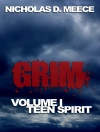The Fall of the House of Usher Edgar Allan Poe – Roderick Usher is ill, but not due to any normal causes. When the narrator of the story arrives at the House of Usher, he finds that all is not well in the old ancestral home. The house itself appears to be almost alive, and the illness of Madeline, Roderick’s sister, is not all it seems.The Fall of the House of Usher by Edgar Allan Poe is a classic short story first in 1839, and was memorably adapted for film by Roger Corman in 1960.The Fall of the House of Usher is in the opinion of many scholars Poe’s most famous work of prose.This unsettling macabre work is viewed as a masterpiece of American Gothic literature. Indeed, as in many of his tales, Poe borrows much from the Gothic tradition. Still, as G. R. Thomson writes in his Introduction to Great Short Works of Edgar Allan Poe: ‘the tale has long been hailed as a masterpiece of Gothic horror; it is also a masterpiece of dramatic irony and structural symbolism.’The Fall of the House of Usher has also been criticized for being too formulaic. Poe was criticized for following his own patterns established in works like Morella and Ligeia using stock characters in stock scenes and situations. Repetitive themes like an unidentifiable disease, madness, and resurrection are also criticized. However, there is speculation that Poe used a real-life incident as the basis for his story: the entombment of two lovers at Usher House in Boston, whose bodies were discovered when the house was demolished in 1800.Scholars speculate that Poe, who was an influence on Herman Melville, inspired the character of Ahab in Melville’s novel Moby-Dick. John Mc Aleer maintained that the idea for ‘objectifying Ahab’s flawed character’ came from the ‘evocative force’ of Poe’s The Fall of the House of Usher. In both Ahab and the house of Usher, the appearance of fundamental soundness is visibly flawed by Ahab’s livid scar, and by the fissure in the masonry of Usher.
关于作者
The name Poe brings to mind images of murderers and madmen, premature burials, and mysterious women who return from the dead. His works have been in print since 1827 and include such literary classics as The Tell-Tale Heart, The Raven, and The Fall of the House of Usher. This versatile writers oeuvre includes short stories, poetry, a novel, a textbook, a book of scientific theory, and hundreds of essays and book reviews. He is widely acknowledged as the inventor of the modern detective story and an innovator in the science fiction genre, but he made his living as Americas first great literary critic and theoretician. Poes reputation today rests primarily on his tales of terror as well as on his haunting lyric poetry.Just as the bizarre characters in Poes stories have captured the public imagination so too has Poe himself. He is seen as a morbid, mysterious figure lurking in the shadows of moonlit cemeteries or crumbling castles. This is the Poe of legend. But much of what we know about Poe is wrong, the product of a biography written by one of his enemies in an attempt to defame the authors name.The real Poe was born to traveling actors in Boston on January 19, 1809. Edgar was the second of three children. His other brother William Henry Leonard Poe would also become a poet before his early death, and Poes sister Rosalie Poe would grow up to teach penmanship at a Richmond girls school. Within three years of Poes birth both of his parents had died, and he was taken in by the wealthy tobacco merchant John Allan and his wife Frances Valentine Allan in Richmond, Virginia while Poes siblings went to live with other families. Mr. Allan would rear Poe to be a businessman and a Virginia gentleman, but Poe had dreams of being a writer in emulation of his childhood hero the British poet Lord Byron. Early poetic verses found written in a young Poes handwriting on the backs of Allans ledger sheets reveal how little interest Poe had in the tobacco business.












